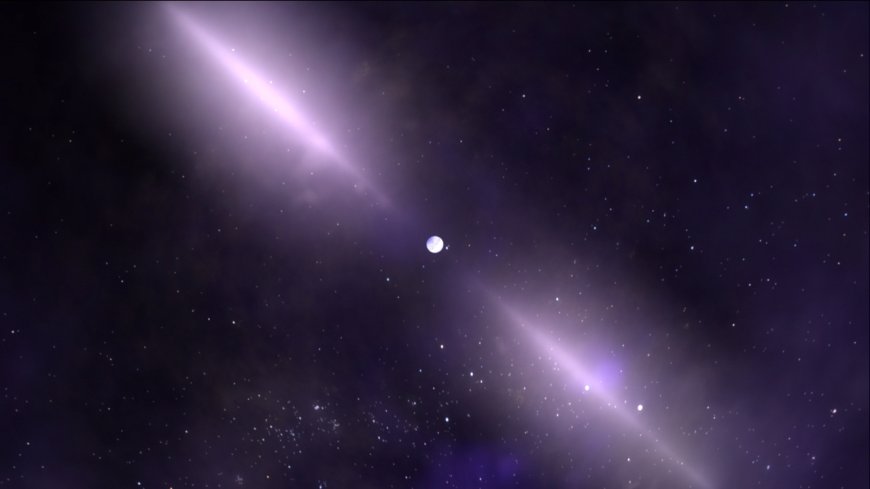Mysterious 'Glitches' in Spinning Dead Star Show Surprising Regularity
Observations of the pulsar PSR J0922+0638 reveal unexpected changes in rotation rate, known as 'glitches,' occurring at a somewhat regular interval. Astronomers are puzzled by these phenomena and are exploring various theories to explain them.

What do you get when you stare at the same dead star for more than 20 years? Insight into the weirdest physics in the universe.
The star PSR J0922+0638 is a pulsar. Pulsars are neutron stars — the ultradense leftover cores of long-dead stars — that spin rapidly and emit radiation at regular intervals. Pulsars have some of the wildest physics in the cosmos, with matter compressed right to the brink of ultimate collapse into a black hole. The only thing preventing that catastrophe is exotic quantum pressures.
A typical pulsar is only a few miles wide but contains the mass of several suns. This makes pulsars some of the densest objects in the universe — second only to black hole singularities. At these extreme densities, neutrons and protons smash together to form what amounts to a single gigantic atomic nucleus. While physicists have a somewhat decent understanding of what nuclear material does at the densities found in the outermost layers, the cores of neutron stars remain complete mysteries.
Because of their extremely high density, pulsars rotate with exceptional regularity. In this case, PSR J0922+0638 has a rotation period of 0.43063 second, and it has largely maintained that rotation rate for hundreds of thousands of years. But it's not perfect, and astronomers can use detailed observations of changes in that rotation rate to guess what's going on inside the pulsar.
Recently, astronomers combined 22 years of data from the Nanshan Radio Telescope in China and the MeerKAT array in South Africa to see how precise this pulsar's timing was. It turns out that, in the past two decades, PSR J0922+0638 wasn't nearly perfect.
In their paper, published to the preprint database arXiv, the astronomers noted over a dozen 'glitches,' or abrupt changes in the rotation rate. Some of these had been observed before, but many were brand-new. A typical glitch changes the rotation rate by less than a factor of a billionth. But for the forces involved with a pulsar, that represents a massive change in energy. Strangely, these glitches occurred somewhat regularly, repeating roughly every 550 days.
On top of the sudden glitches, the astronomers discovered that the rotation rate of PSR J0922+0638 slowly sped up and slowed down, on a cycle spanning roughly 500 to 600 days.
Perhaps it's not a coincidence that the glitches experienced by PSR J0922+0638 corresponded to the same cycle as its slow changes in its rotation rate. The astronomers aren't exactly sure what's causing the changes, but they pointed to several possible explanations.
Pulsars have tremendously strong magnetic fields, which can store and release energy. So perhaps PSR J0922+0638 is experiencing something akin to the magnetic cycle on the sun in which it goes through alternating periods of strong and weak sunspot activity, the authors proposed.
Another explanation might be that there's an exotic superfluid of fundamental particles deep in the pulsar's core. Sloshing within that superfluid could change the entire star's rotation rate, and when the fluid switched directions, it could lead to a glitch.
Ultimately, we do not understand where glitches come from or exactly what's going on inside pulsars. But the two must be linked somehow, and it's only through careful, dedicated observations that we'll figure it out.
According to the source: Space.
What's Your Reaction?
 Like
0
Like
0
 Dislike
0
Dislike
0
 Love
0
Love
0
 Funny
0
Funny
0
 Angry
0
Angry
0
 Sad
0
Sad
0
 Wow
0
Wow
0
























































































































































































